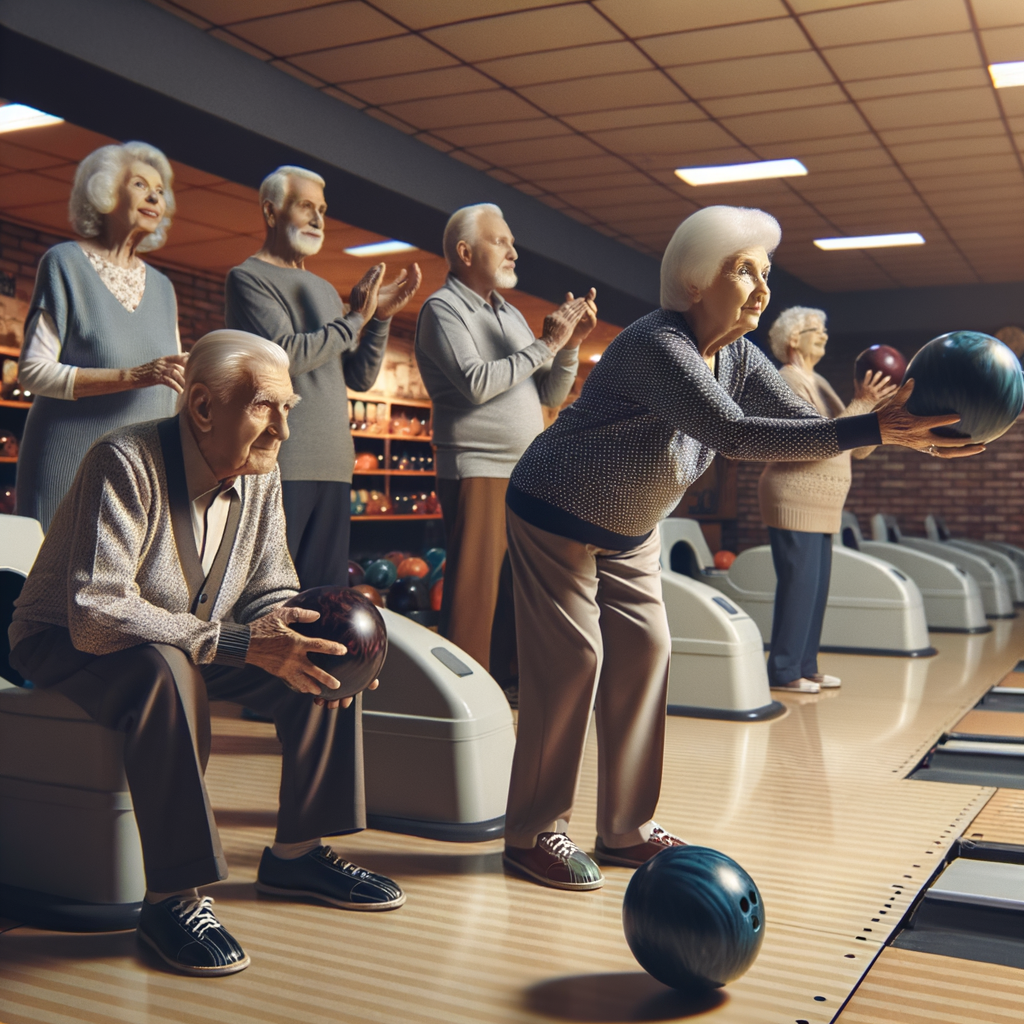Understanding Bowling Basics
The Fundamentals of Bowling
At its core, bowling involves rolling a ball down a lane to knock down pins arranged in a triangle formation at the other end. The goal is simple: knock down as many pins as you can to score points. Each game consists of ten frames, and in each frame, you have two chances to roll the ball.

Learning the Rules and Scoring System: The scoring system in bowling might seem complex at first, but it's quite straightforward once you get the hang of it. A strike, knocking down all ten pins with your first ball, scores ten points plus the total of your next two rolls. A spare, knocking down all ten pins with two rolls in a frame, scores ten points plus the total of your next roll.
Basic Techniques: Holding, swinging, and releasing the ball are fundamental techniques every bowler should master. A proper grip on the ball is crucial; it should feel comfortable and secure in your hand. The swing starts with your arm straight back and then moves forward smoothly as you approach the foul line, where you'll release the ball onto the lane.
Equipment and Lane Characteristics
Types of Bowling Balls: There are different types of bowling balls designed for various playing styles and levels of experience. Some balls are made for straight shots, while others are designed to curve. The weight and material of the ball can also affect how it rolls down the lane.
Lane Characteristics: Bowling lanes are not all created equal; they have oil patterns that can influence how a ball moves toward the pins. These patterns vary from lane to lane and can change over time as more games are played. Being aware of these patterns can help you adjust your technique for better accuracy.
Lane Courtesy: Understanding proper etiquette is part of learning how to bowl respectfully alongside others. This includes taking turns correctly, being ready when it's your turn to bowl, and avoiding distractions for other players.
Physical Preparation and Safety

Pre-Bowling Preparation
Before you even step foot in a bowling alley, there are a few key steps you should take to ensure you're ready to play without risking injury.
Consult with a Healthcare Provider: It's wise to talk to your doctor if you have any health issues that might be affected by bowling. This is a simple step that can help make sure bowling is a good fit for your health needs.
Warm-Up Routine: Warming up before you bowl is crucial. Start with stretches that target areas used in bowling, like your arms, shoulders, and legs. This helps prepare your muscles for the activity ahead and can prevent strains or injuries.
Strengthening Exercises: To support your bowling game, consider exercises that strengthen your shoulders and legs. Strong muscles in these areas can improve your bowling technique and reduce the risk of injury. Simple exercises like shoulder presses and squats can be very beneficial.
Safety During Play
Once you're at the alley and ready to bowl, keeping safety in mind will help ensure an enjoyable experience without unnecessary risks.
Stay Hydrated: Seniors are particularly susceptible to dehydration, which can affect not only your health but also your performance in the game. Make sure to drink plenty of water before, during, and after playing.
Protective Gear: Using protective gear such as wrist supports and knee braces can help prevent injuries. These items provide support to parts of the body that are heavily used in bowling and can be especially helpful if you have pre-existing conditions or concerns in these areas.
Recognize Signs of Fatigue: It's important to listen to your body and recognize when you're feeling tired or fatigued. Bowling requires physical effort, so taking breaks when needed is essential to avoid overexertion. If you start feeling worn out or notice any discomfort, take a rest before continuing.
Technique and Form
Stance and Approach
A good posture is key when you're getting ready to bowl. It sets the stage for a stable and effective approach. Stand straight and hold the ball comfortably in front of you, keeping your feet shoulder-width apart. This position helps maintain balance throughout your approach.

Footwork plays a crucial role in bowling. The right footwork pattern - typically a four-step approach for right-handed bowlers (reverse it if you're left-handed) - helps maintain balance and stability. Start with the foot opposite your bowling hand, and with each step, focus on moving smoothly towards the foul line. This controlled movement is essential for setting up a strong delivery.
Arm Swing and Release
The arm swing should be smooth and controlled. Imagine your arm as a pendulum swinging back and forth without any forced motion. This natural swing helps in guiding the ball's trajectory as you aim for the pins.
Achieving a consistent release is vital for accuracy and power in your shots. As you release the ball, aim to do so at the lowest point of your swing for maximum control. Practice this movement to find a comfortable release point that works for you.
The follow-through is just as important as the initial swing. After releasing the ball, continue moving your arm in its trajectory direction. This action can significantly improve shot precision by ensuring that your body's momentum is directed towards your target.
Adapting to Conditions
Lane conditions can vary greatly from one bowling center to another or even from lane to lane within the same center. Observing how your ball reacts on different lanes can provide valuable insights into making necessary adjustments.
Adjusting your stance, swing, or release based on these observations can help counteract tricky lane conditions. For instance, if you notice that your ball tends to slide too much or not enough, altering your speed or angle of release might be beneficial.
Equipment Selection
Choosing the Right Bowling Ball
The first step in your bowling journey is picking a suitable ball. It's crucial to choose one that matches your strength. A ball that's too heavy can strain your muscles, while one that's too light might not knock down as many pins as you'd hope. Aim for a weight that feels comfortable yet challenging.
Grip is another key factor. A ball that fits well in your hand will not only feel more comfortable but also give you better control over your throws. It's worth spending some time to find a ball with the right grip size for your fingers.
Bowling balls come in various materials and core types, each affecting how the ball rolls and hits the pins. Urethane and reactive resin are common materials that offer different levels of friction and performance on the lane. The core of the ball influences its spin and movement. While getting into specifics might seem daunting, remember that it’s about finding a balance between comfort and performance that suits your style.
Footwear and Assistive Equipment
Good bowling shoes are as important as the ball itself. They should fit well, offering support while allowing you to slide smoothly during your approach. The right amount of slide can enhance your control over speed and direction, leading to more consistent strikes or spares.
For those who may find delivering the ball down the lane challenging, ramps or other assistive devices are available. These tools can help maintain enjoyment of the game while accommodating different levels of physical ability.
Lastly, taking care of your equipment is vital for both safety and optimal performance. Regular maintenance like cleaning your ball and shoes will ensure they last longer and perform better on every roll.
Mental Approach and Strategy
Cultivating a Positive Mindset
Having a positive attitude is key in bowling. It helps you stay focused and calm, even when things don't go as planned. To keep your emotions in check, try these tips:
- Stay Positive: Remind yourself of your successes, no matter how small. This can boost your confidence and keep negative thoughts at bay.
- Emotion Management: If you find yourself getting frustrated or upset, take a deep breath. Focus on what you can control – your next move.
- Pre-Shot Routine: Create a simple routine before each shot. This might include deep breathing, visualizing the shot, or a specific stance. It helps focus your mind and block out distractions.
- Visualization: Imagine the perfect shot before you take it. See the ball rolling down the lane and hitting the pins just right. This technique can improve both your focus and confidence.
Strategic Thinking and Adaptability
Understanding the game's strategy is crucial for improving your play. Here’s how to sharpen your strategic thinking:
- Reading Lane Conditions: Each lane is different, with its own unique conditions that can affect how the ball moves. Pay attention to these conditions and adjust your approach accordingly.
- Adaptability: Lanes can change during a game, so it’s important to be flexible with your strategy. If something isn’t working, don’t be afraid to try something new.
- Adjusting Strategy Mid-Game: Sometimes, you may need to change your plan in the middle of a game. This could mean switching balls, altering your release point, or changing where you stand on the lane.
Social Aspects and Community
Building Connections Through Bowling
Bowling is a great way to make friends and have fun with others. When you join a bowling league, you get to meet new people and enjoy some friendly games. It's not all about being the best; it's more about having a good time and being part of a group. Leagues welcome players of all levels, so don't worry if you're just starting out.
Bowling centers also put on social events and tournaments. These are perfect for meeting more people and playing in a relaxed atmosphere. Whether it's a special theme night or just a casual gathering, these events are all about bringing people together.
If you like the idea of setting up your own bowling group, go for it! It can be as easy as asking around your neighborhood or among friends who also like bowling. Then, you can arrange times to play that suit everyone. This way, you create your own little community centered around bowling.
Embracing Intergenerational Play and Technology
Bowling is great for family time because it's something that everyone, from kids to grandparents, can enjoy together. It helps families bond and make memories while being active.
Technology has also made its way into bowling, making it even more enjoyable. There are apps and social media for keeping in touch with other bowlers, planning games, or sharing fun moments from your games. These tools help you stay updated on league happenings, keep track of your scores over time, or just share advice with fellow bowlers.
Adaptive Bowling and Accessibility

Adaptive Equipment and Assistive Devices
For those who might find regular bowling hard, there are helpful options. There are ramps that let players roll the ball down the lane without needing to swing it. This is really useful for people who use wheelchairs or can't move their arms well.
There are also lighter balls. These balls are easier to hold and throw, making them perfect for older adults or those getting better from injuries.
Devices that help with grip and staying steady can also make bowling better. These tools help people hold onto the ball better and keep their balance when they walk up and throw, making the game safer and more fun.
Bowling Center Modifications and Programs
Many bowling places have made changes to be more welcoming. They've added ramps for easier access to lanes, automatic scoring to avoid having to keep score by hand, and bumpers that stop balls from going into the gutter, which is great for beginners.
Besides these changes, some centers have special programs just for older adults or people with disabilities. These programs might include lessons on how to bowl in ways that work for them and social events that bring players together.









